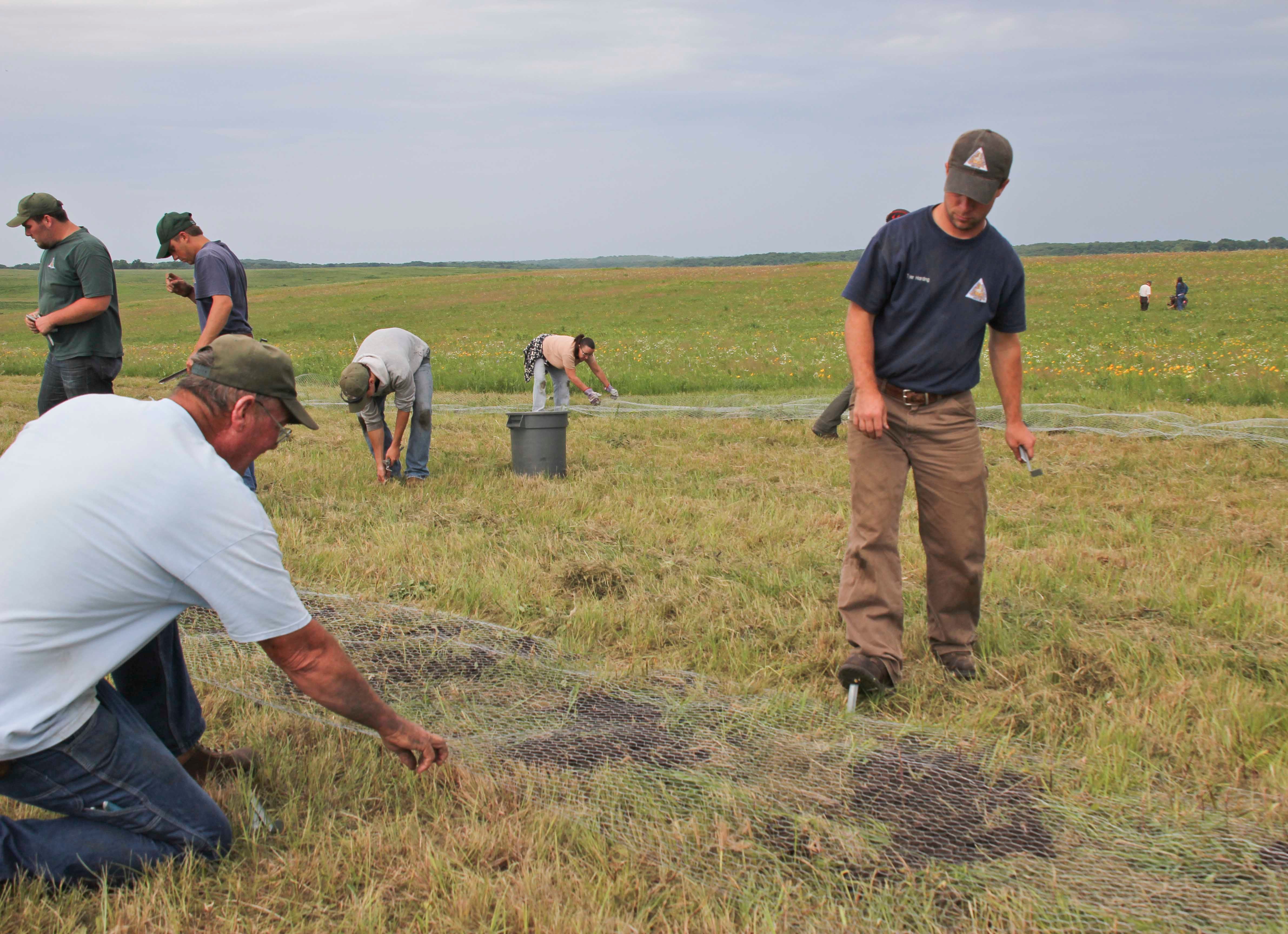
Xplor reconnects kids to nature and helps them find adventure in their own backyard. Free to residents of Missouri.


































Stay in Touch with MDC news, newsletters, events, and manage your subscription

Xplor reconnects kids to nature and helps them find adventure in their own backyard. Free to residents of Missouri.

A monthly publication about conservation in Missouri. Started in 1938, the printed magazine is free to residents of Missouri.




El Dorado Springs, Mo. – Scientists working to restore a unique and endangered insect to Missouri -- the American burying beetle -- got some good news recently. And for the second year they released captive-propagated beetles at the Wah’Kon-Tah Prairie.
Crews checking insect traps near last year’s release site found a female American burying beetle that survived winter, said Bob Merz, who directs the recovery program for the insect at the Saint Louis Zoo. Merz and conservation partners released 302 additional pairs on June 4 to help restore a highly unusual insect.
“I was thrilled that we caught that one that had over wintered,” Merz said. “To find one tells me we picked a good site that has good habitat and the resources for them to survive.”
The beetles resemble a common burying beetle, black with orange markings, but they are larger. Originally they were found in 35 states in both woodlands and grasslands. But prior to last year’s release, they had diminished to only small populations in six states besides Missouri. Before the release, the last verified specimen in Missouri was collected in the 1970s.
American burying beetles eat carrion and can move dead critters as large as a bobwhite quail into burrows. They dig holes to stash dead things as food while rearing young, and in an unusual twist, both parents care for the young and feed them from the carrion they roll into a ball.
The beetles released were raised at the Saint Louis Zoo. Their restoration is a partnership between the zoo, the Missouri Department of Conservation (MDC), The Nature Conservancy of Missouri and the U.S. Fish and Wildlife Service. Though endangered nationally, because they are being released, the beetles are classified as a non-essential population. Their presence causes no additional rules for public and private lands. They do not affect crops or livestock in any way. Wah’Kon-Tah Prairie is owned by the Nature Conservancy and managed by MDC.
Merz is optimistic because last summer broods of young beetles were found where the parents had been released. Plus finding the adult that overwintered from last year is a good sign. Weather conditions have not been good for insect movement in recent weeks, so crews are hopeful a warm up will enable them to catch more adults from last year in the coming weeks. The goal is to establish a self-sustaining population.
The zoo is also conducting studies elsewhere in Missouri in hopes of finding a previously unknown population of American burying beetles. Carrion beetles, like vultures in the bird world, provide a useful service in ecology by removing dead and decaying tissues.
For the release, crews bury a pair of beetles along with a dead, pen-raised quail. Chicken wire is then pegged over the holes to keep scavengers away.
American burying beetles are nocturnal and spend much of their lives underground. They were added to the federal endangered species list in 1989.
For more information visit mdc.mo.gov/discover-nature/wildlife-restoration/american-burying-beetle-restoration or www.stlzoo.org/conservation/wildcare-institute/americanburyingbeetleconse/